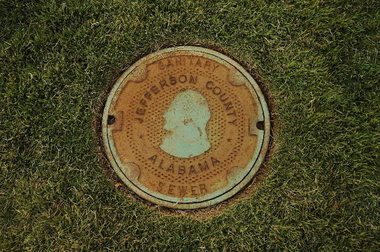The future, coming to a municipality near you
Thanks to Steve B. for sending this through, having heard about our go round at our friend Charles G's facebook site.
As always, the photo takes you to the story.
As an aside, clicking on the authors name will take you to a fairly complete list of Jefferson County issues as reported by Mr. Wright.
Receiver seeks control of $257 million in Jefferson County sewer cash and investments
By
The court-appointed receiver who oversees Jefferson County's sewer system has asked the county for control over the system's $257 million in cash and investments in case the financially troubled county files bankruptcy.
The move would expand the authority of John S. Young, who is pushing for double-digit increases in rates to pay sewer system creditors who are owed $3.2 billion. Currently, Jeff Hager, the county's chief financial officer, controls the flow of the money.
"I am taking signature authority over the revenue funds and the bond funds," Young said. "It makes sure that we keep those funds segregated and allow me to keep using the bond funds for the capital programs. It probably protects the funds and puts the funds in a better position if the county files bankruptcy."
Meanwhile, several Jefferson County commissioners say the county is "moving closer" to bankruptcy as a result of its general fund cash crunch and other fiscal woes.
County officials have projected Alabama's most populous county will run out of general fund money during the first week in August, if replacement revenue is not generated.
- Read more about The future, coming to a municipality near you
- Log in or register to post comments



















































![[Most Recent Quotes from www.kitco.com]](http://www.kitconet.com/charts/metals/gold/t24_au_en_usoz_2.gif)




![[Most Recent Quotes from www.kitco.com]](http://www.kitconet.com/charts/metals/silver/t24_ag_en_usoz_2.gif)





